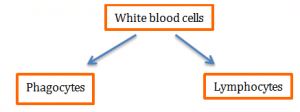Defense against infection
L.O To learn how the body deals with bacteria and viruses.
Bacteria and viruses cause infections and diseases. When they enter your body they can damage cells and can also cause death of cells.
Bacteria
Bacteria are microorganisms that cause disease when they enter the body, they are very small organisms and cause a variety of illnesses such as food poising, cholera and whooping cough
Viruses
Viruses are smaller than bacteria, but are potentially more harmful. Once viruses enter the body they cannot survive by themselves, therefore they invade cells and reproduce within the cell. Once they make thousands of copies the cell will burst releasing the copies of the virus into the blood stream and around the body.
The most common illnesses causes by viruses are influenza (the common flu), chicken pox and HIV
Defending against infection
Our body have several ways of protecting us from diseases, one of the first barriers to disease is our skin. This is the our external barrier. This is why when we cut our skin we are at rick to developing more infections
Our internal protection are cells known as white blood cells.
White blood cells engulf the bacteria and viruses and destroy . they can produce antibodies and antitoxins which help to destroy the bacteria and viruses.
White blood cells
White blood cells can be divided into different groups as they have different functions

Phagocytes are the initial molecule released into the blood stream to tackle the pathogens. The phagocytes ingest the bacteria or virus and then destroy it , or the release antibodies specific to the bacteria.
Once the phagocyte has identified the bacteria, it send a chemical message to release an army of lymphocytes which have developed specific antibodies to fight the bacteria.
The lymphocytes works in different ways
- They bind to the pathogens and will destroy them
- They cause the pathogens to stick together so they can be easily destroyed by the phagocytes
- They bind to the pathogen and release chemical signals to call the phagocytes
Vaccination
A vaccination is a kind of medication given to people to ensure that certain diseases do not affect people.
Vaccinations work by injecting a small amount of a bacteria into your body, so pathogens can produce lymphocytes, which are specific to that pathogen. Therefore the next time that pathogen enters the body, we are already prepared to fight the infection.
Resistance
A bacteria strain can develop a resistance to a certain antibiotic. Resistance occurs when the bacteria undergoes a random mutation which allows it to survive against the antibiotic. Because it has a random mutation not only does it survive it can also reproduce.


